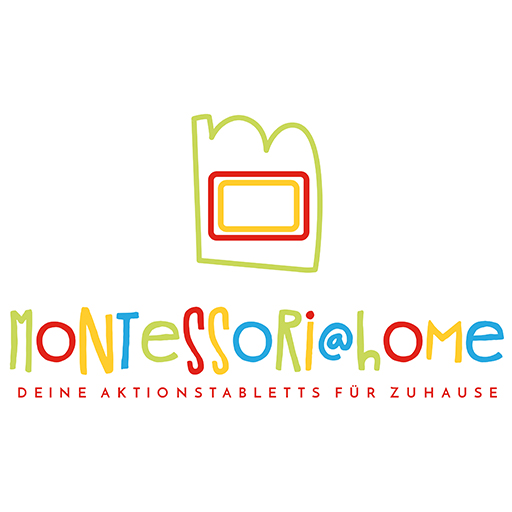Black and white puzzle copy laying
Objective: Promote hand-eye coordination and shape perception
Material: Large puzzle pieces “Can you match it”*, basket, copier, printer
Preparation: 4 puzzles are selected from the puzzle set. These are placed on a color copier and copied. Then the puzzle pieces are disassembled and placed in the basket. This is placed on the tray to the left, and the finished copy from the printer is placed to the right.
Execution: The child takes the puzzle pieces out of the basket and places them on the right side of the finished copy. This gives the child a simple introduction to puzzling equally sized loose puzzle pieces. When all 4 puzzles are finished, they are disassembled and placed back in the basket.
This tray promotes both shape perception and the child’s motor skills.
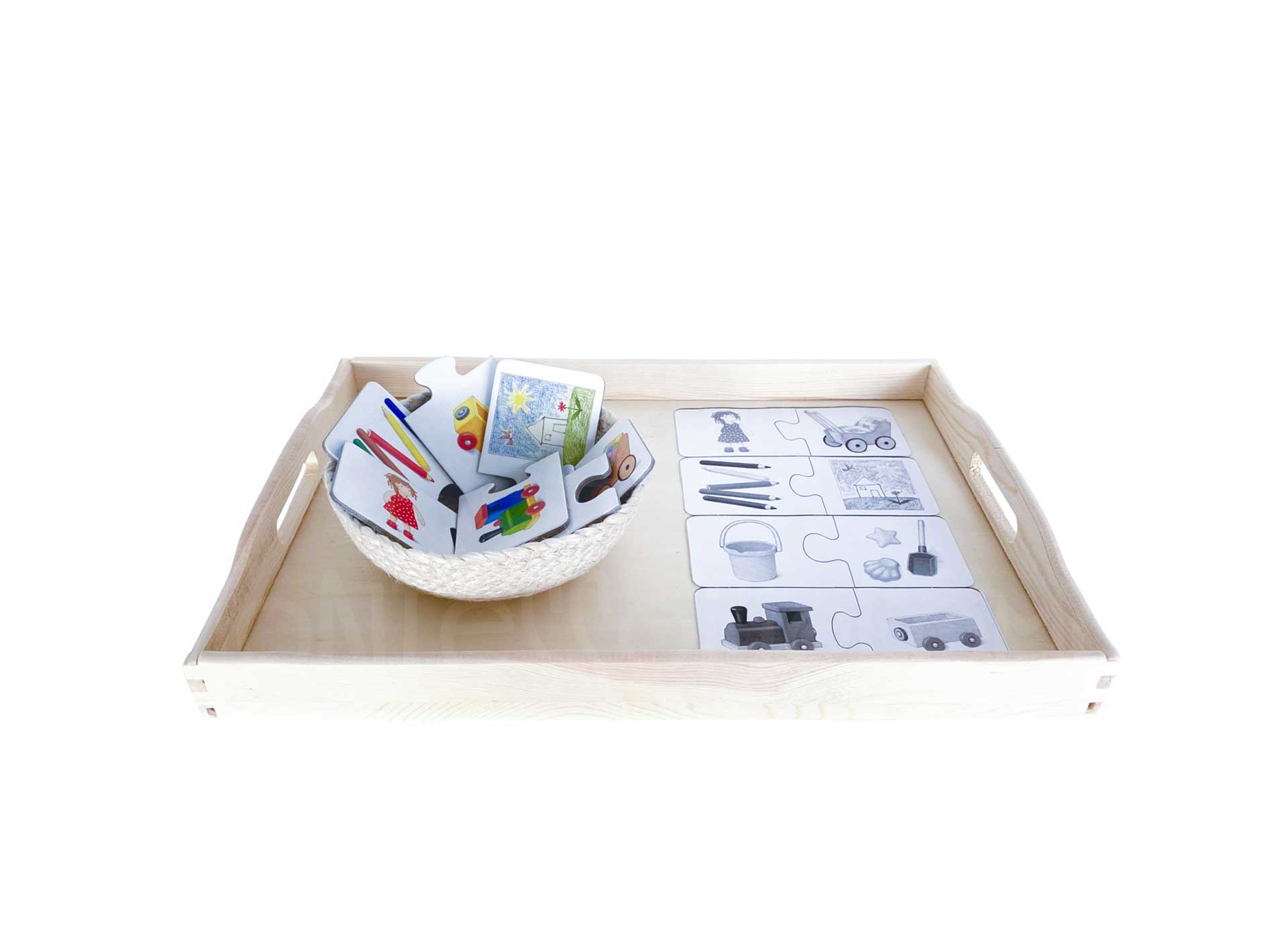
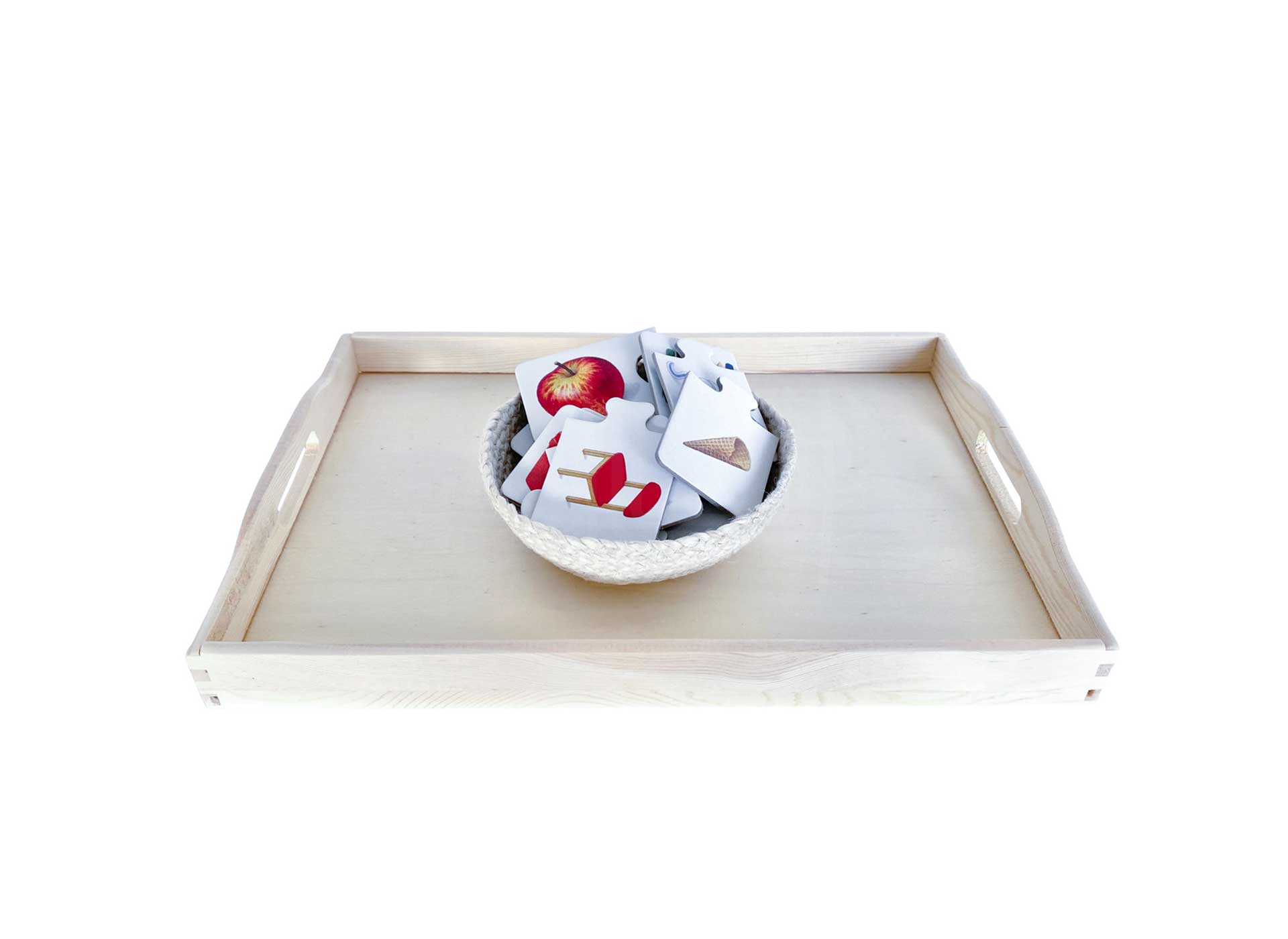
Can you match it puzzle
Objective: Promote visual perception, language comprehension and motor skills
Material: Large puzzle pieces “Can you match it”*, basket
Preparation: The puzzle pieces are placed in the basket and the basket is placed on the tray.
Execution: The child tries to place the puzzle pieces, which he/she placed on the copy on the previous tray, without the help of the copy. This is also helped by the matching pictures, which further develop language comprehension. Older children name the objects as they put them together. If this is mastered, the child can also be asked to explain why the two pieces fit together. Afterwards, the puzzle pieces are returned to the basket.
This material both promotes visual perception and motor skills, as well as language comprehension.
Cylinder puzzle 1
Objective: Promote eye-hand coordination and shape perception
Material: Wooden cylinders of the same height*, basket
Preparation: All cylinders are taken out of the mold and placed in the basket. This is placed on a tray on the left. The mold is placed to the right.
Execution: The child takes the cylinders out of the basket and looks for the matching hole in the mold. Here, the child learns about different diameters. Once all the cylinders are in the mold, they are placed back in the basket.
This tray promotes not only the shape perception but also the motor skills of the child.
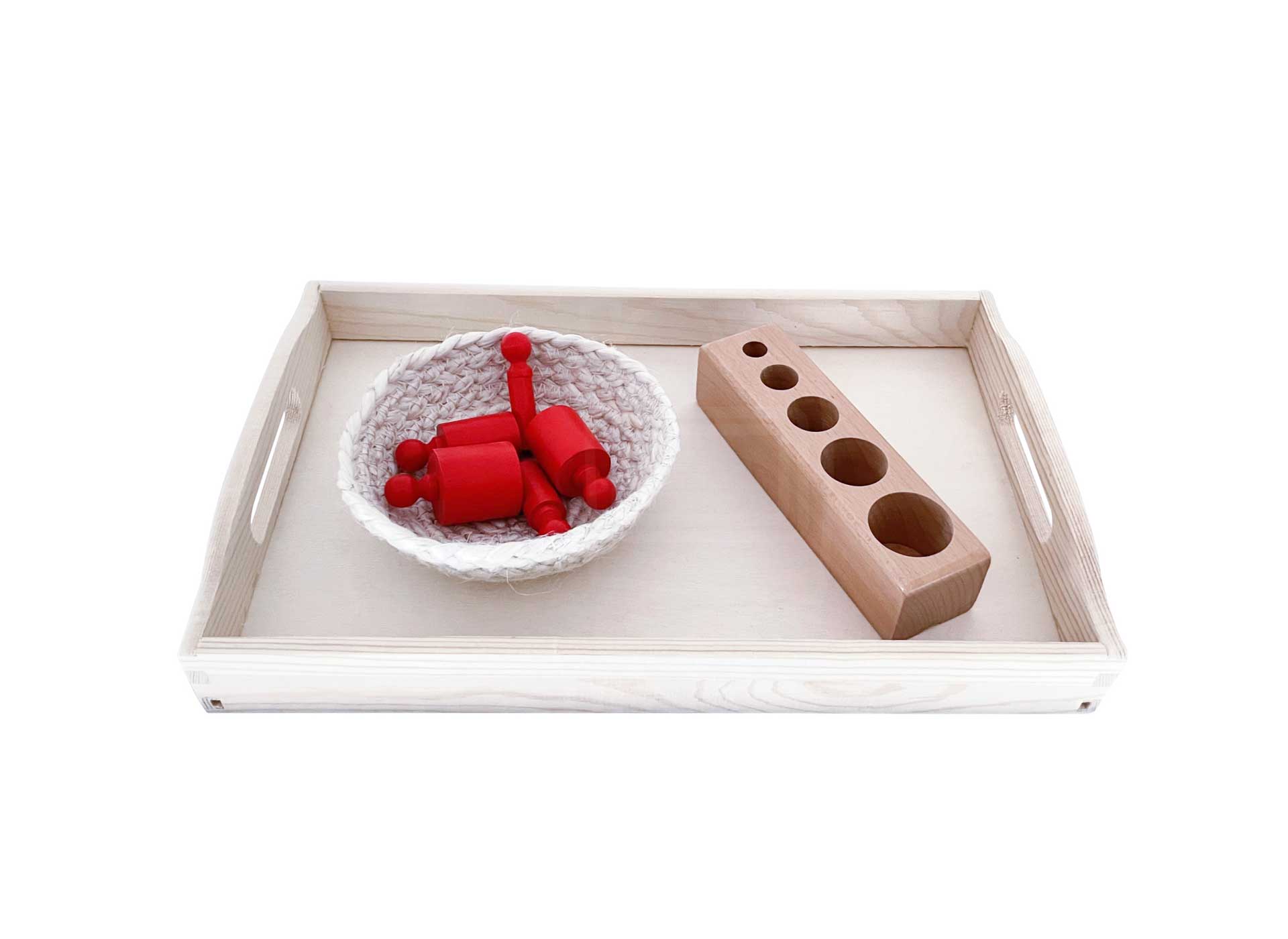
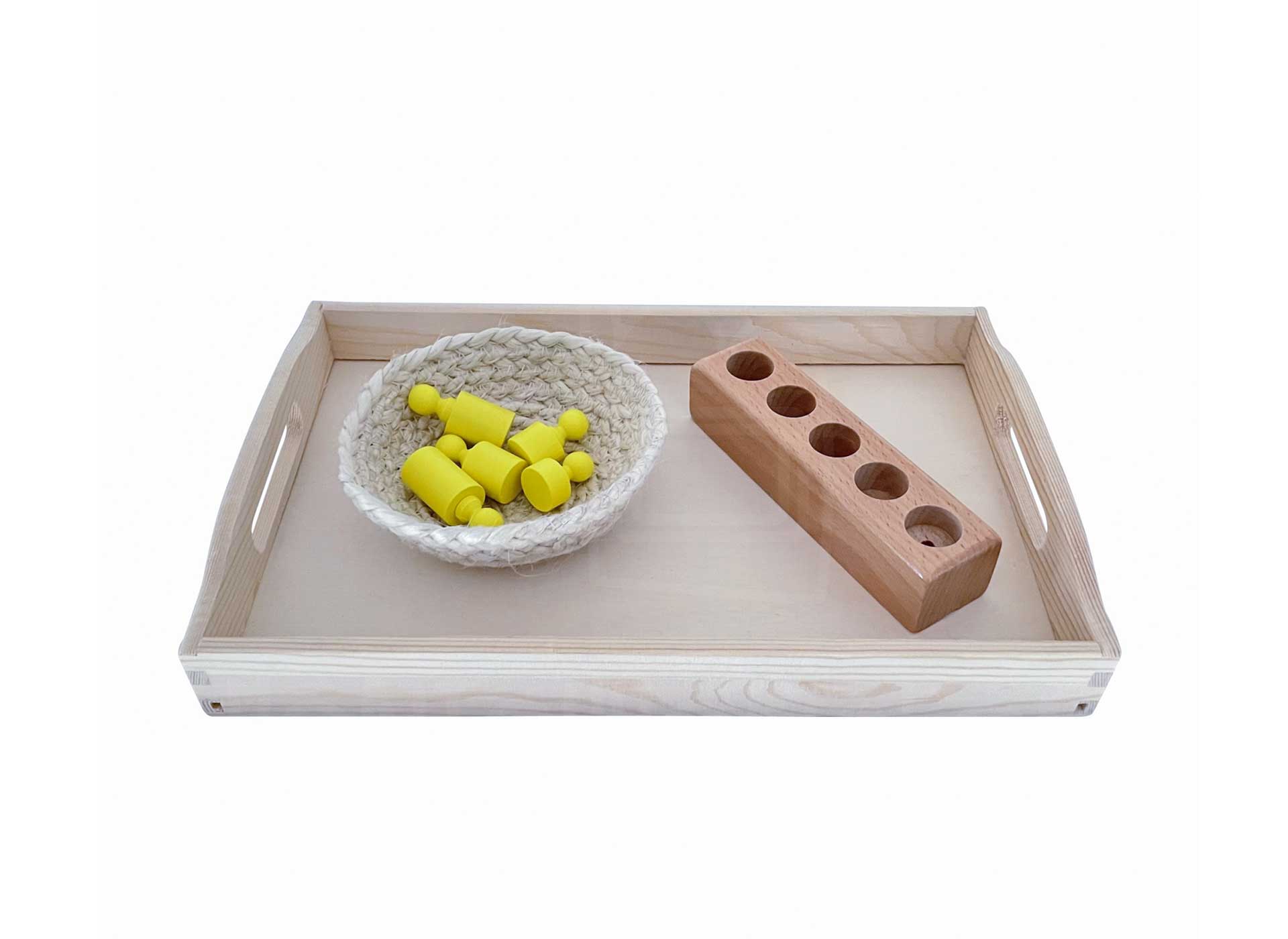
Cylinder puzzle 2
Objective: Promote eye-hand coordination and shape perception
Material: Wooden cylinders with different heights*, basket
Preparation: All cylinders are taken out of the mold and placed in the basket. This is placed on a tray on the left. The mold is placed to the right.
Execution: The child takes the cylinders out of the basket and looks for the matching hole in the mold. Here, the child learns about different heights. Once all the cylinders are in the mold, they are placed back in the basket.
This tray promotes not only the shape perception but also the motor skills of the child.
Scooping and sorting colors
Objective: Promote eye-hand coordination and color perception
Material: colorful building blocks*, colorful paper, scissors, 3 baskets, children’s dipper*
Preparation: 10 equal-sized building blocks, 2 of each color of the back basket and 4 of the color of the other basket (here red) are placed in a large basket. Then cut out 4 equally sized round circles from paper and place one circle (red in this case) in one basket and the other 3 circles in the other basket. The basket with the building blocks is placed on the tray on the left, along with the ladle and the other two baskets on the right.
Execution: The child scoops the building blocks out of the basket with the ladle and into one of the matching right baskets. After all 10 blocks have been scooped into the right baskets, they are placed back into the empty basket or scooped. The scooping process can also be assigned to the “everyday life” task area.
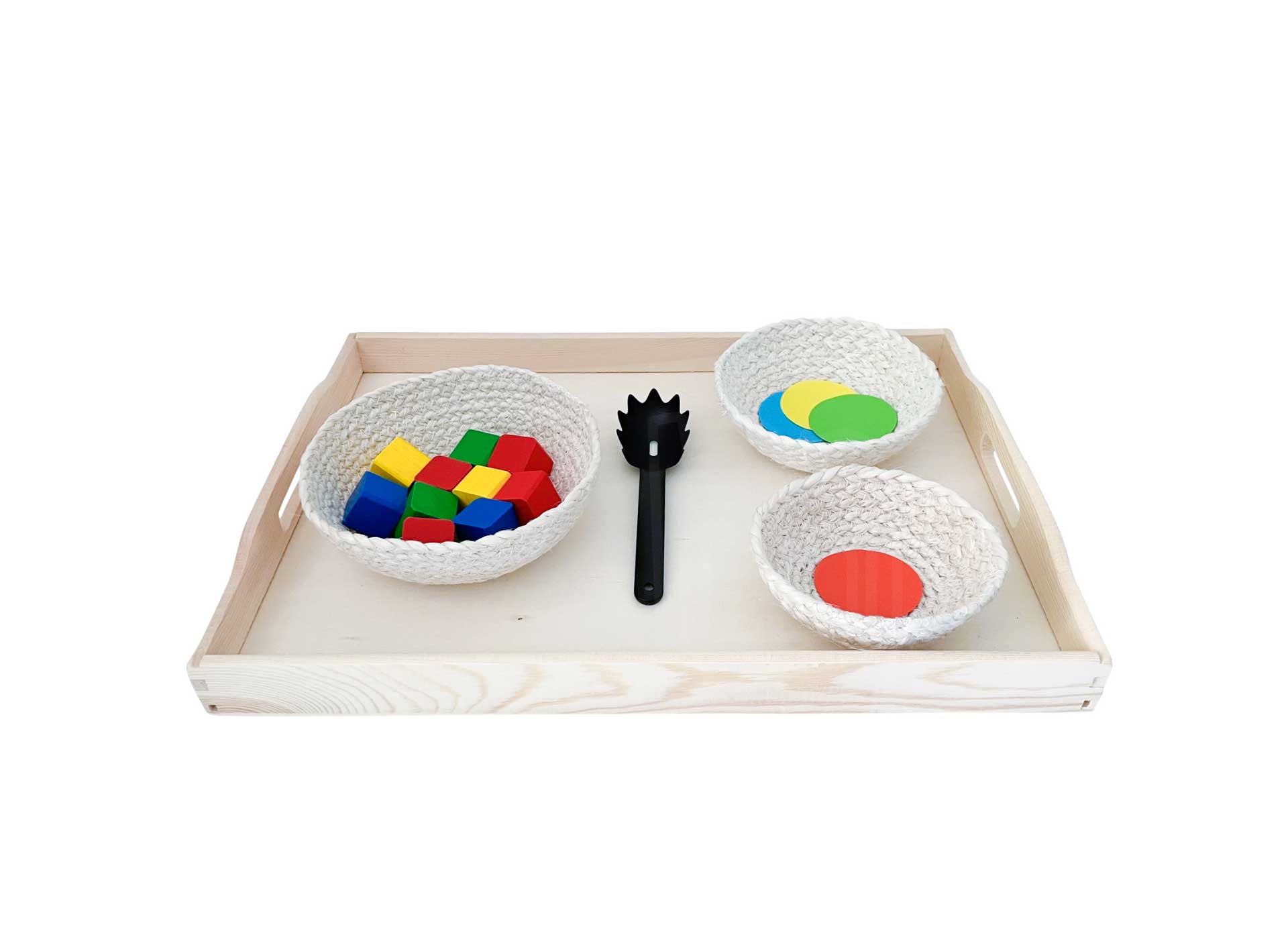
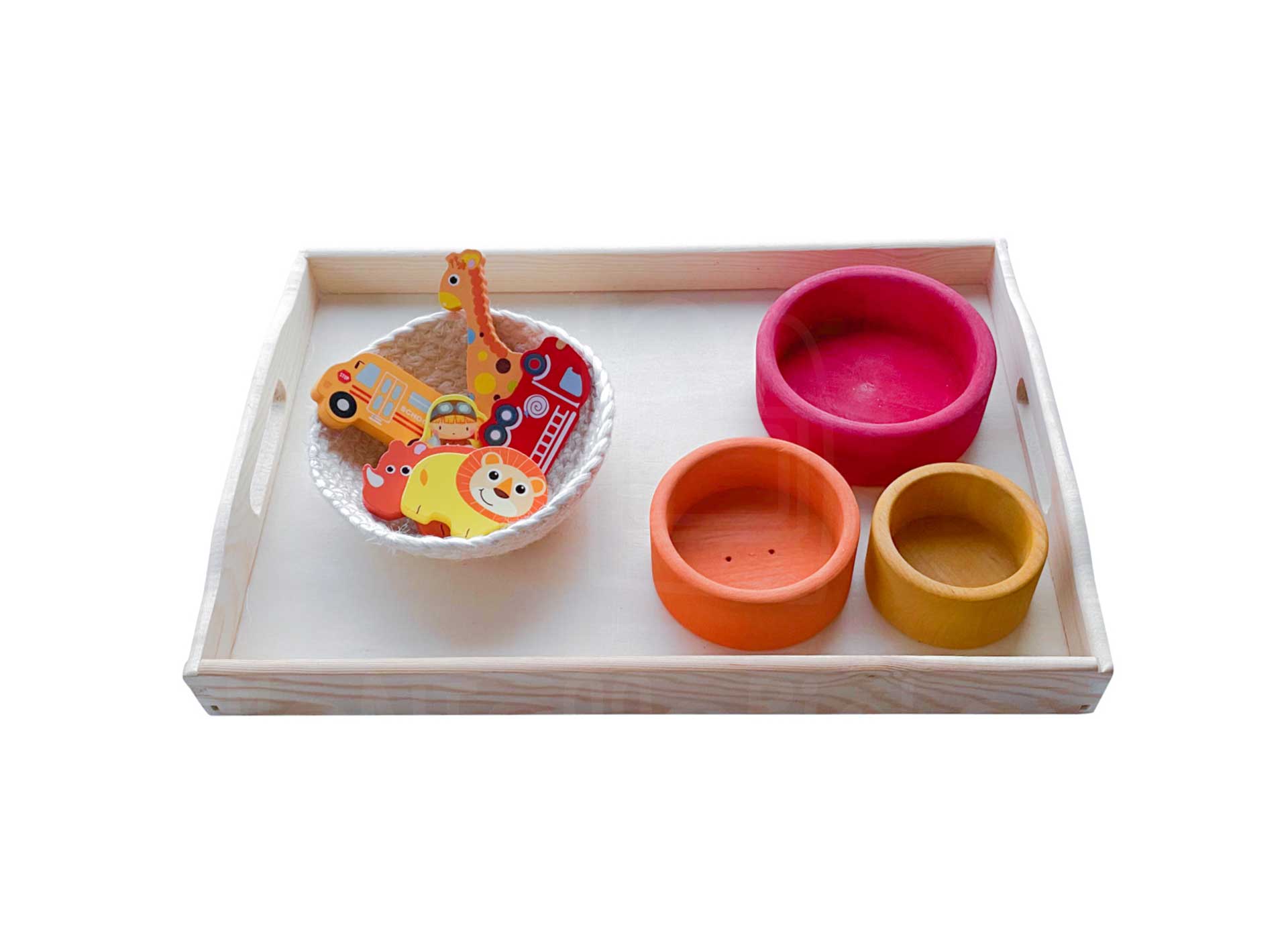
Puzzle pieces color sorting
Objective: Promote eye-hand coordination and color perception
Material: Puzzle pieces, Grimm’s bowls*, basket
Preparation: The yellow, orange, and red puzzle pieces are removed from the puzzle, placed in a basket, and placed on the tray to the left. The bowls are placed to the right.
Execution: The child takes one puzzle piece at a time and places it in the matching small bowl. Since the puzzle pieces are all in similar shades, it is important to pay closer attention to the colors here when sorting. The tones yellow, orange and red are learned. When all the puzzle pieces are in the little bowls, they are put back into the basket.
This tray actively promotes both color perception and the child’s motor skills.
Stick carrots
Objective: Promote shape perception
Material: Basket, carrots sticking game*
Vorbereitung: Die Karotten werden aus der Form genommen und in den Korb gelegt. Beides wird auf dem Tablett platziert.
Durchführung: Das Kind nimmt eine Karotte nach der anderen und steckt sie in die Löcher des Holzrahmens. Diese Übung trainiert die Formwahrnehmung, da das von der Dicke her passende Loch gefunden werden muss, damit am Ende alle Karotten in das Spielbrett passen, darf keine Karotte in einem “falschen” Loch sitzen.
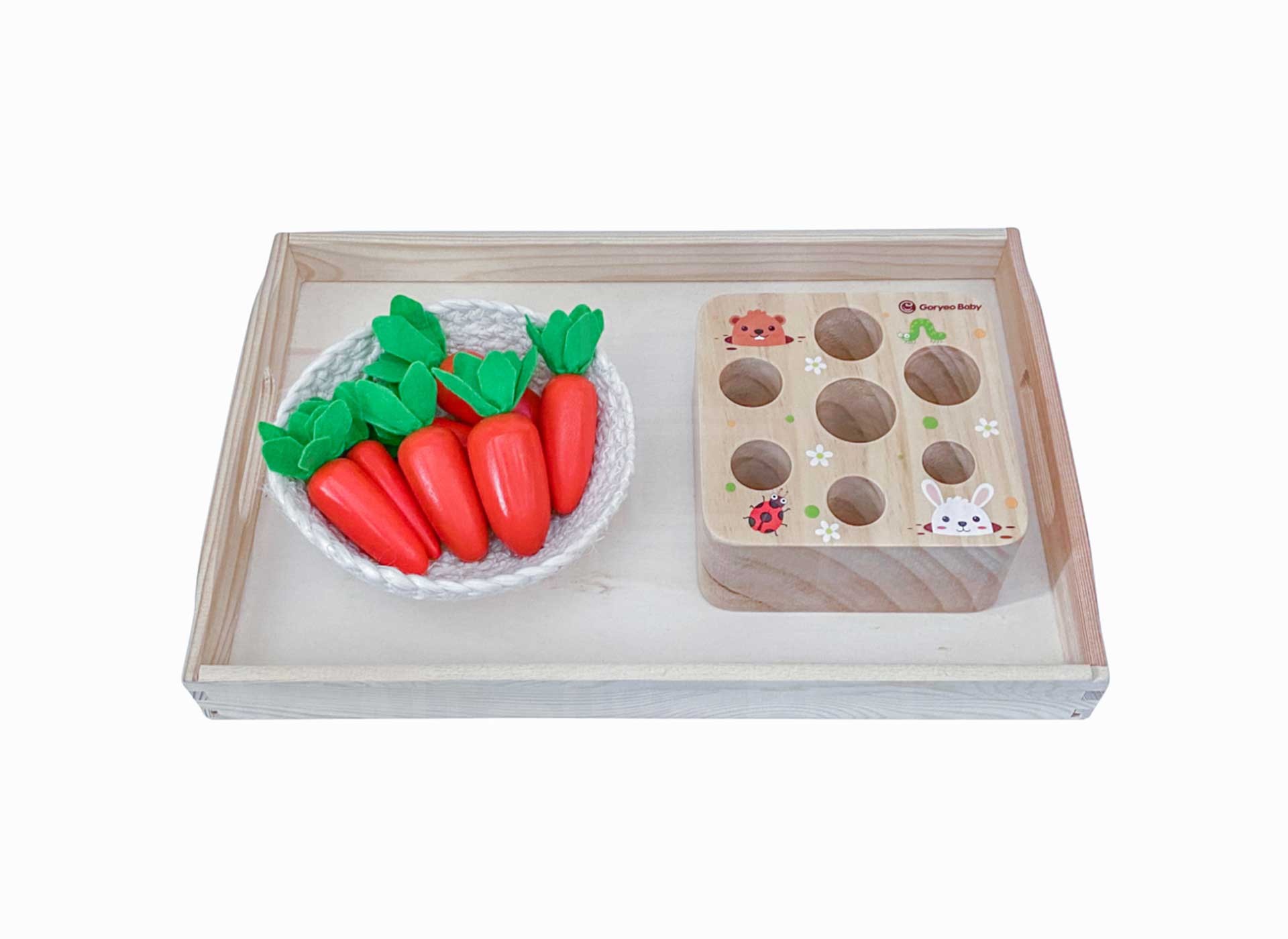
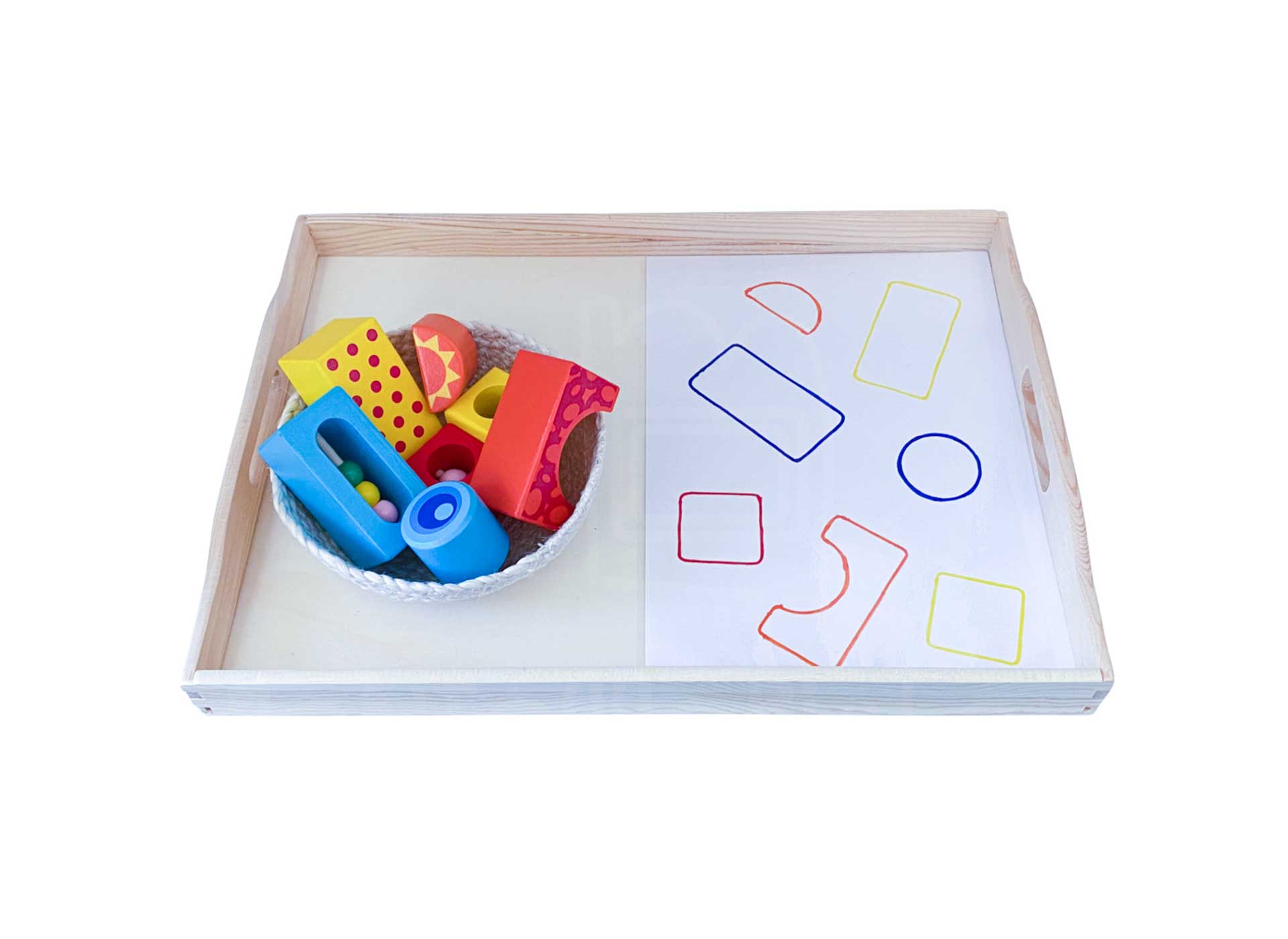
Building blocks puzzle
Objective: Promote eye-hand coordination and color perception
Material: Building blocks*, basket, paper, felt-tip pens, laminator*
Preparation: The building blocks are placed on the paper and traced with the appropriate color. Then the paper is laminated for durability and put on the tray. To the left, the building blocks are placed in a basket.
Execution: The child takes one building block at a time from the basket and places it on the matching place on the paper. When all the pieces are in the correct place, they are all put back into the basket.
Fruit colors
Objective: Promote color perception
Material: Small clothespins, basket, cards with different fruits and colors, laminator*, scissors
Preparation: Cards with different fruits and a selection of 3 colors are made, printed, cut out and laminated. On the back of each card, for example, a dot is used to mark which is the correct color so that the child has a self-checking function. Small clothespins are then placed in a basket and this is placed next to the pile of fruit cards on the tray.
Execution: the child takes a card from the pile, names the color and the fruit, or vegetable, and clips the clothespin to the correct color at the bottom of the card. The card can then be turned over and checked to see if the clothespin is in the right place based on the dot.
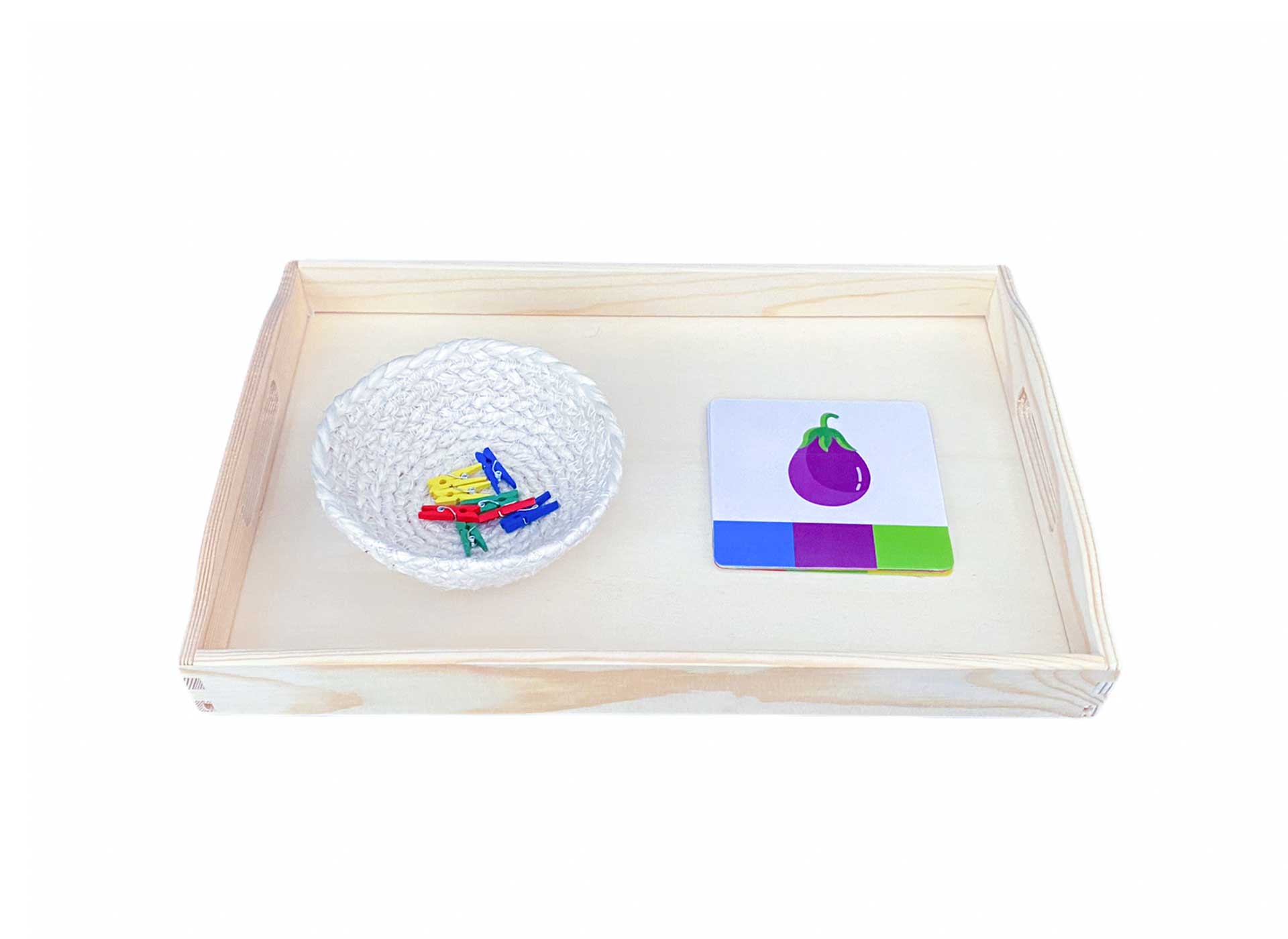
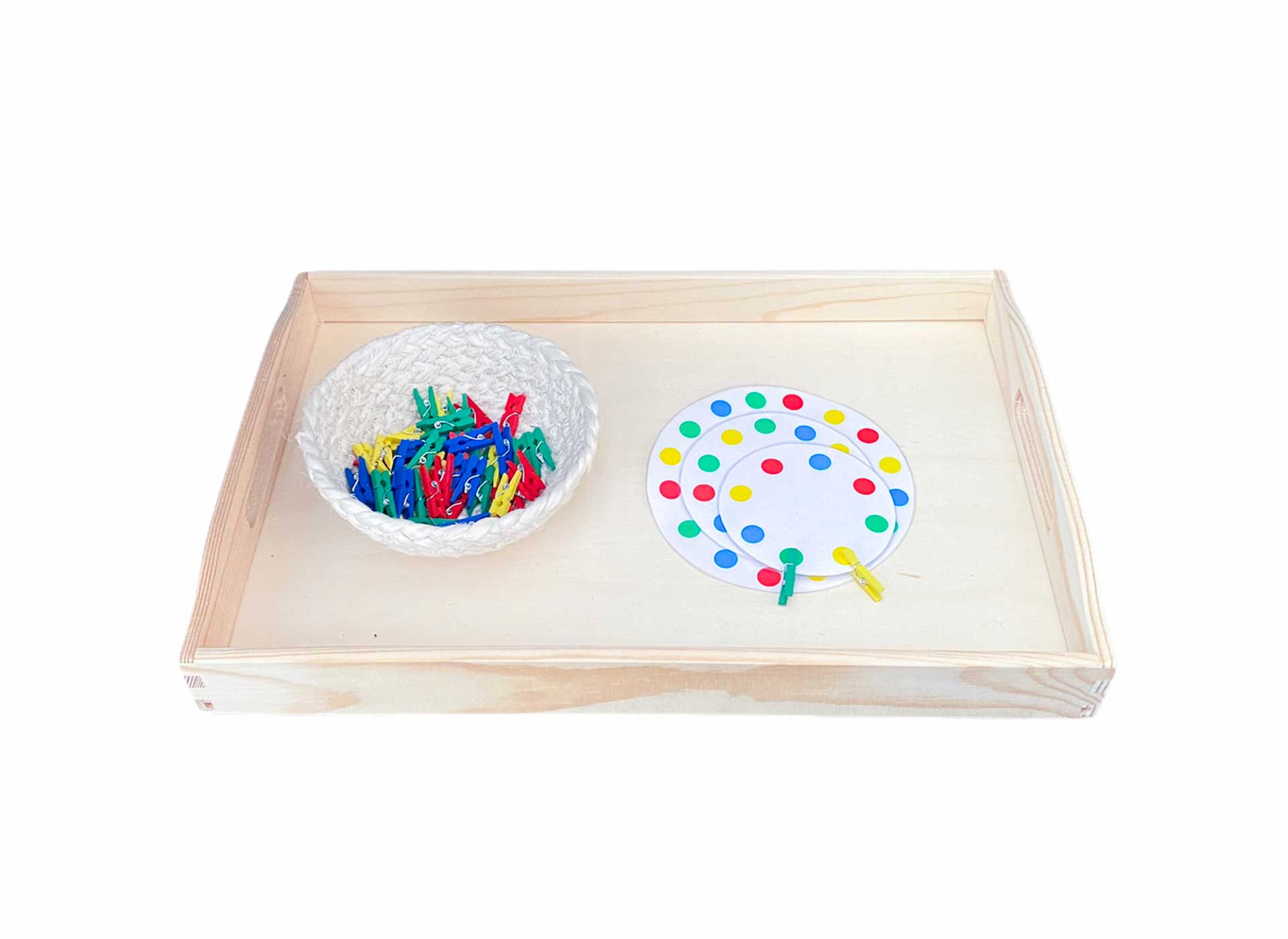
Clothespins color circle
Objective: Promote eye-hand coordination, color perception, and pincer grasp
Materials: Colorful mini clothespins, paper, colorful stickers*, scissors, laminator*
Preparation: Place the clothespins in a basket. Cut circles of different sizes from the paper. Then stick colorful stickers, in the same colors of the clothespins, on the edge of the circles at the same distance. The circles are laminated and cut out. Finally, the basket and the circles are placed together on the tray.
Execution: The child takes a circle and clips the clothespins with the colors matching the stickers onto the circles. When all the stickers have a clothespin of a matching color, the child moves on to the next circle or clips the clothespins off again and puts everything back on the tray.
This tray can also be assigned to the category visual perception.
Sticker colors
Objective: Promote eye-hand coordination, color perception, and pincer grasp
Material: colorful paper, colorful stickers*
Preparation: 4 pieces of paper of the same size and the color-matching stickers are placed on a tray.
Execution: The child takes the stickers and sticks them on the color-matching paper. Depending on their level of knowledge, they can say the name of the color aloud while sticking them.
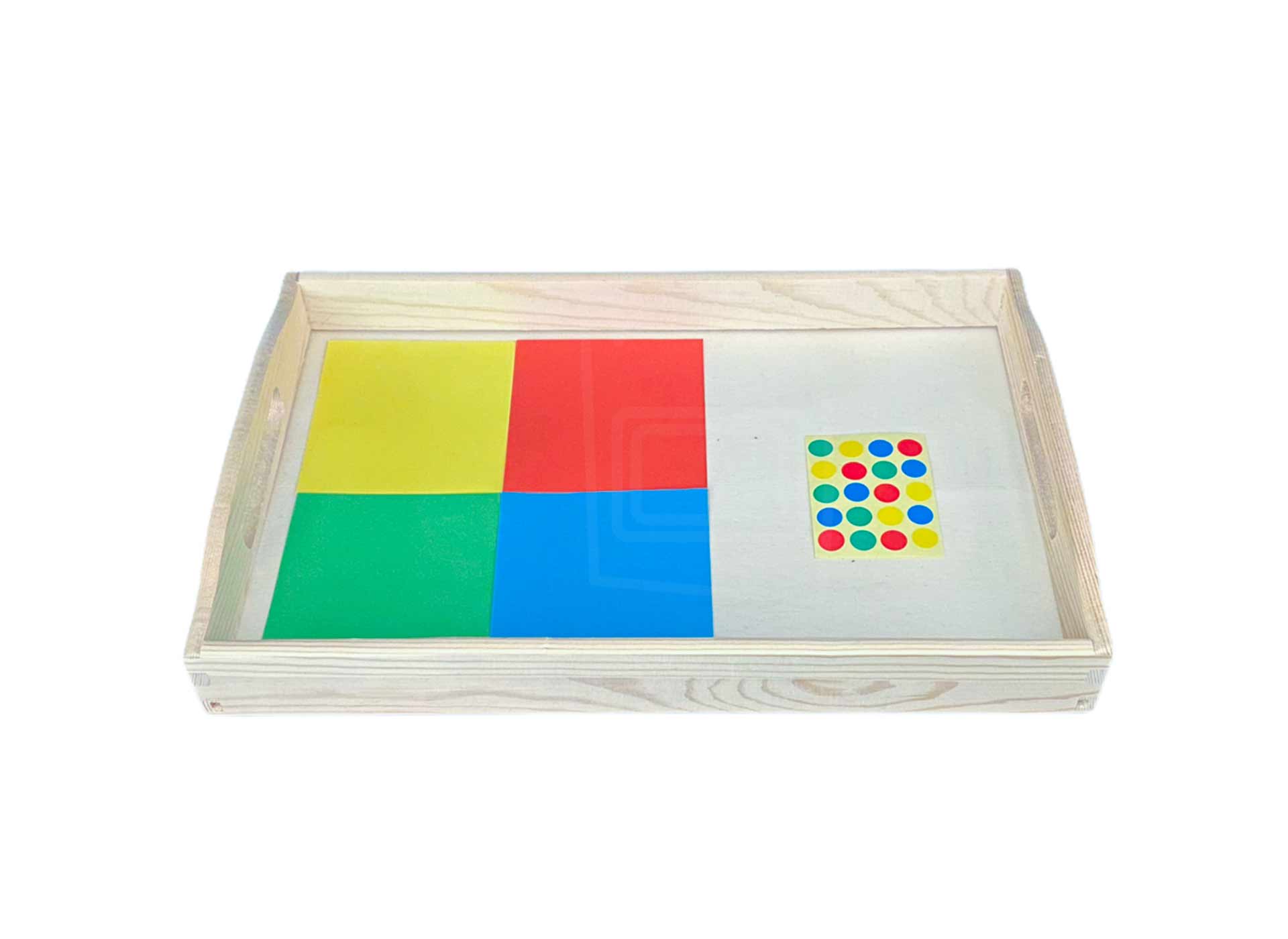
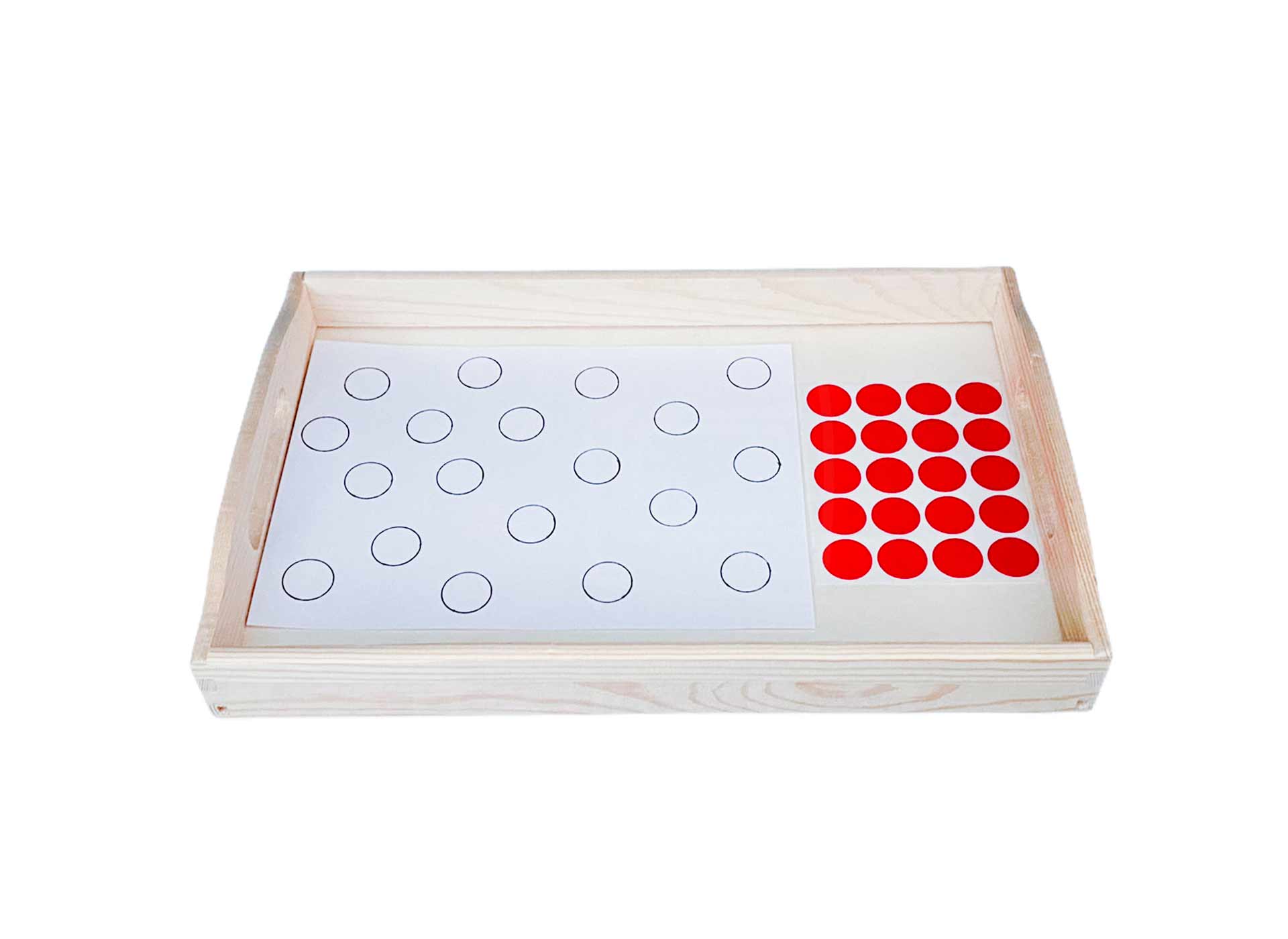
Sticker large circles
Objective: Promote eye-hand coordination and pincer grasp
Material: Paper, large colorful stickers*
Preparation: Large circles are drawn on a sheet of paper and this is placed on a tray together with stickers of the same size.
Execution: The child takes the stickers and sticks them on the drawn circles until there is a sticker on all circles.
Sticker small circles
Objective: Promote eye-hand coordination and pincer grasp
Material: Paper, small colorful stickers*
Preparation: Small circles are drawn on a sheet of paper and this is placed on a tray together with stickers of the same size.
Execution: The child takes the stickers and sticks them on the drawn circles until there is a sticker on all circles.
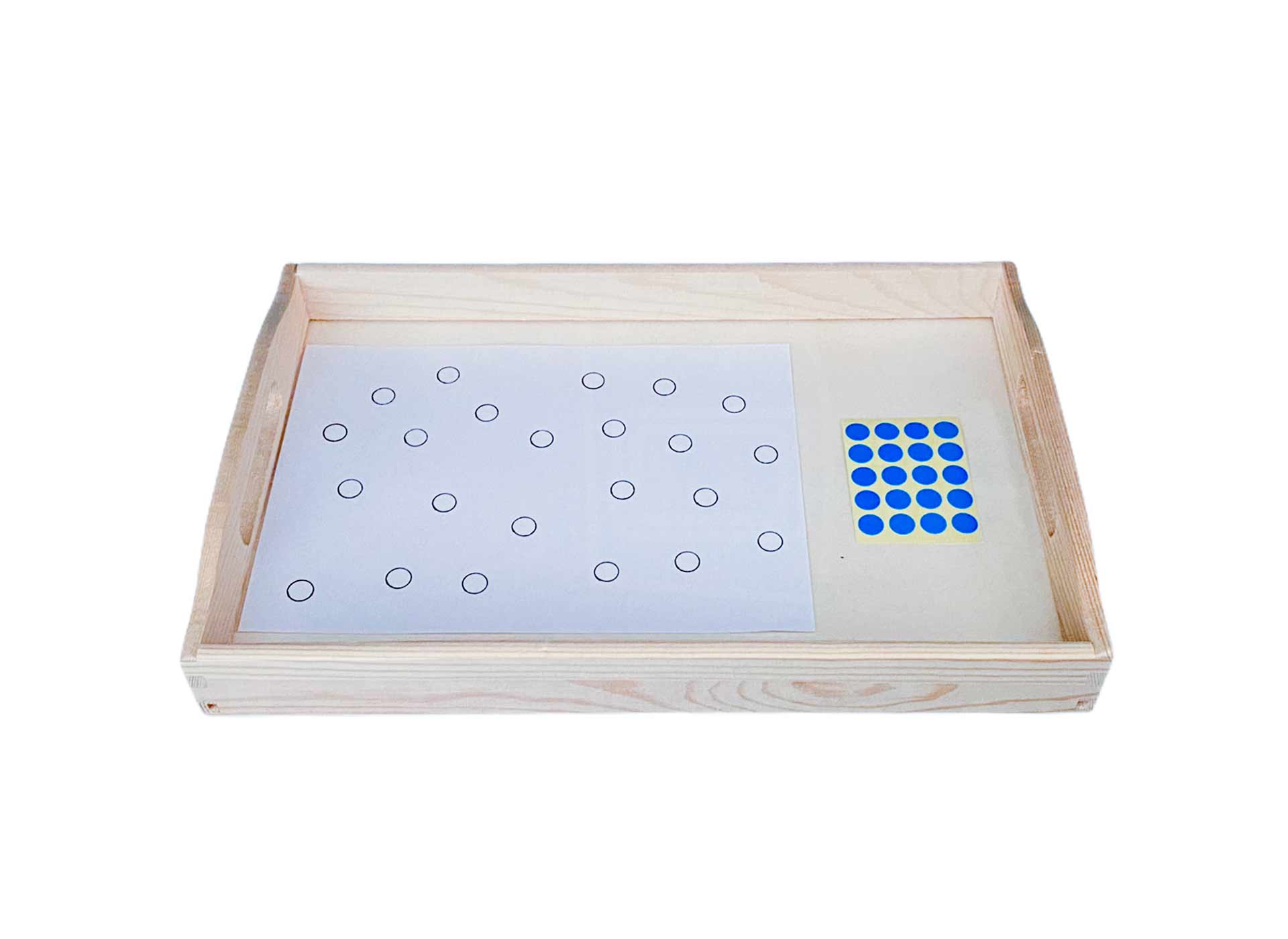
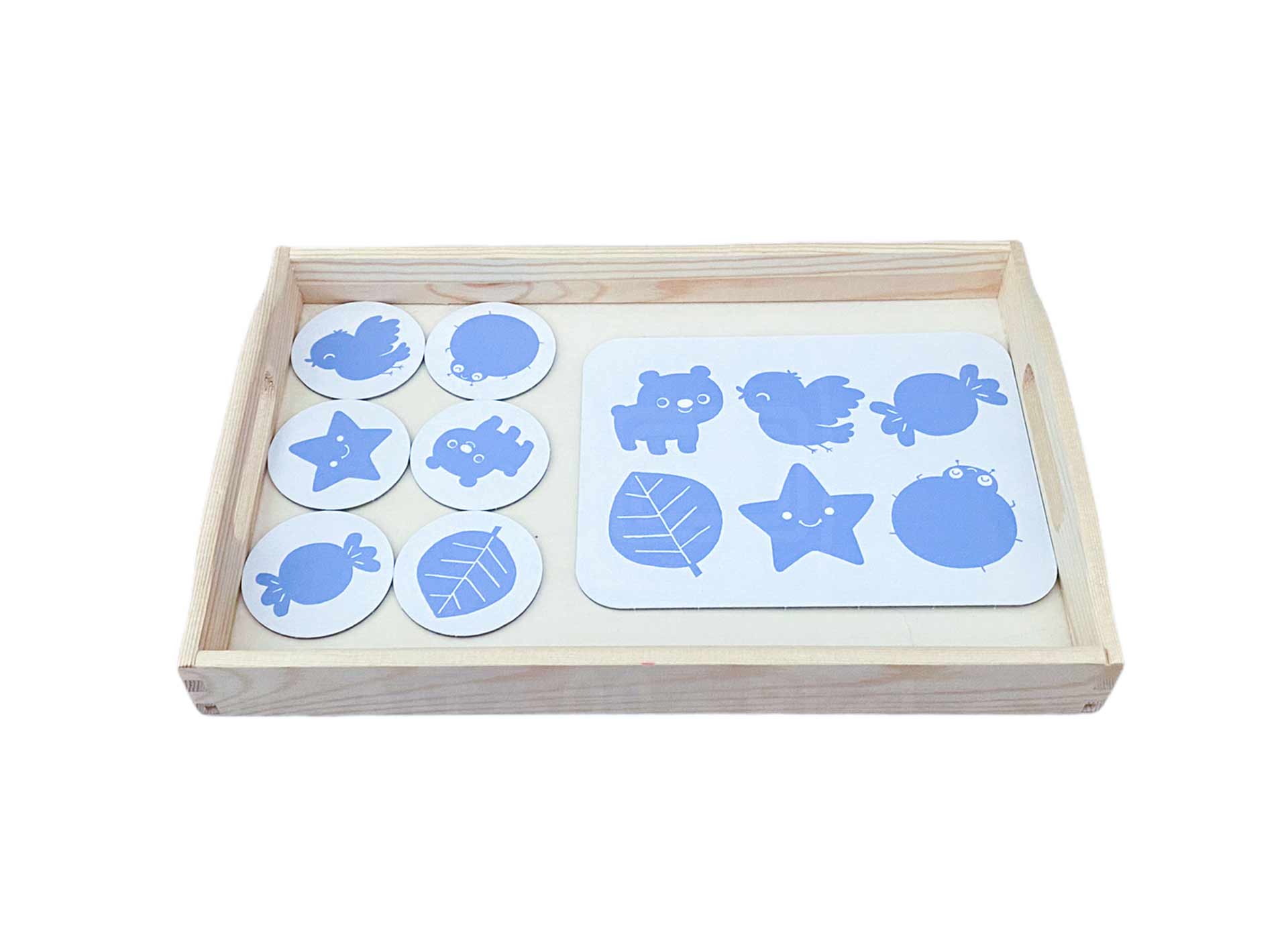
Shape comparison
Objective: Promote shape perception and eye-hand coordination
Material: Shapes & Colors Game*
Preparation: A game board and the 6 matching round game cards are selected from the shapes and colors game and placed together on a tray. The round cards are on the left and the game board is on the right.
Execution: The child takes one round card after the other and places it on the same symbol on the board on the right.
When all the cards have been correctly matched, they are put back next to the board.
Depending on the child’s linguistic progress, the child can also name the symbols on the cards while placing them.
Laying colorful stones
Objective: Promote pincer grasp and color perception
Material: Ravensburger Quips*, basket
Preparation: The Quips wooden stones are placed in a basket and this is placed on a tray together with a game board.
Execution: The child takes the colored stones and places them on the correct color field. When all the squares are occupied, all the stones are put back into the basket and everything is put together on the tray.
Caution: The Quips stones are small parts, so this tray should only be used under adult supervision or with children who do not put objects in their mouths.
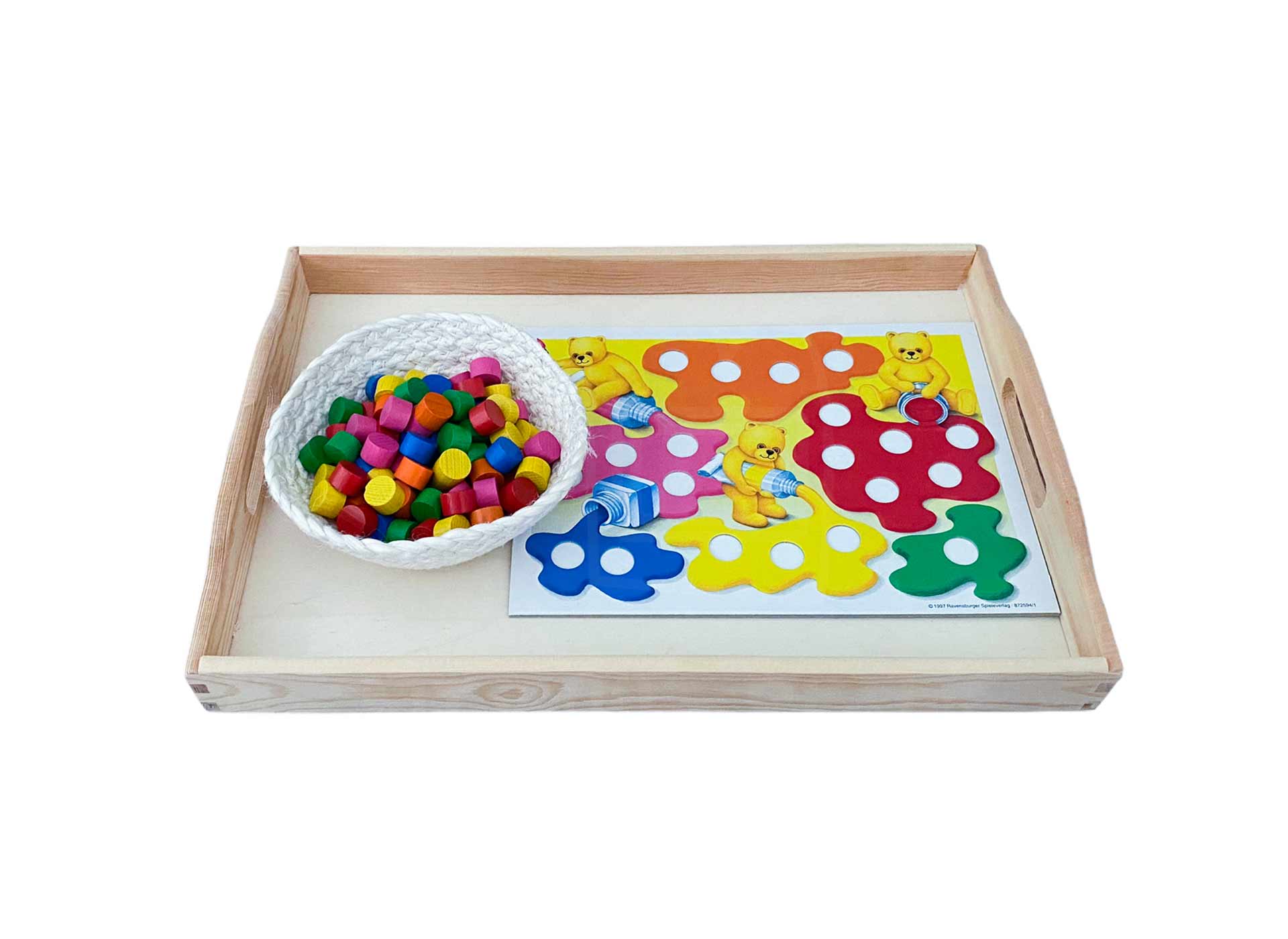
* Links, welche mit einem Sternchen (*) versehen sind, stellen Amazon Partnerlinks dar (Affiliate-Links / Provisionslinks). Wenn du über diese Links etwas kaufst, erhalten wir eine kleine Provision, denn von etwas müssen wir ja auch leben. Dir entstehen dabei aber keinerlei zusätzlichen Kosten.
